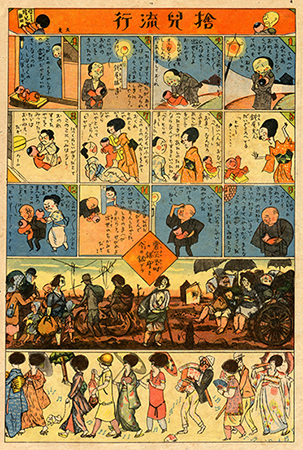 From February 14th to March 26th 2017
From February 14th to March 26th 2017
Rolex Learning Center EPFL
Five modules put up within the EPFL’s Rolex Learning Center explain the origins of modern manga through texts and images.
At first, the manga results from the collision between Japanese and Occidental aesthetics and ideas. Today, it is a whole independent sector of publishing which influences artists everywhere in the world. Let’s take the time to discover, understand them and to read them without prejudices because the history of manga is not going to end anytime soon : they are part of our imaginary and enlighten us on the world.
The manga is mentioned as soon as 1798 by Japanese poet and writer Santo Kyoden. It is then three-colored (black, grey and flesh color) prints which do not tell us any stories yet depict landscapes, the fauna and flora, everyday life as well as the supernatural.
Modern manga as we know it today come into existence in 1946 with Osamu Tezuka’s work, considered as the god of manga. His most famous pieces in Europe are Metropolis (1949), Astro Boy (1952) and Phoenix (1968). From the end of American occupation of Japan (1952) follows the boom of the manga industry which is now an integral part of Japanese culture and everyday life.
From the 1980s, the manga reaches maturity by offering stories for adults and stories that are darker and more complex. The manga now conquers young Europeans. The first which was published in France with several volumes was Katsuhiro Otommo’s famous Akira (1982), a story at the crossroads of science-fiction and a detective novel.
Today the manga has the strongest growth these last years within the French-speaking publishing. In France, the manga makes up more than 40% of comic books sales.
Exhibition organised in partnership with La Maison d’Ailleurs
